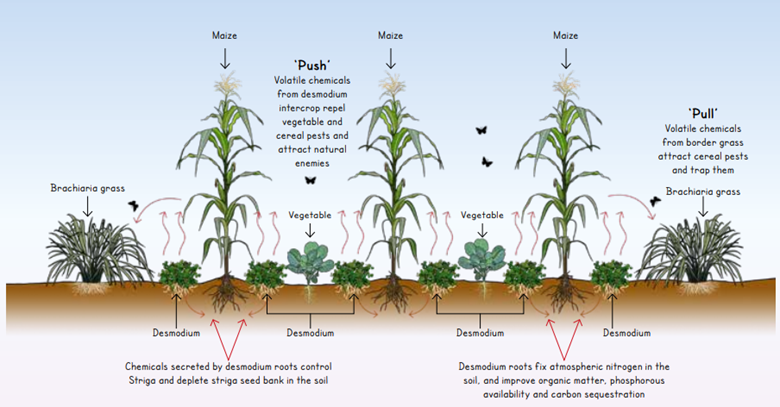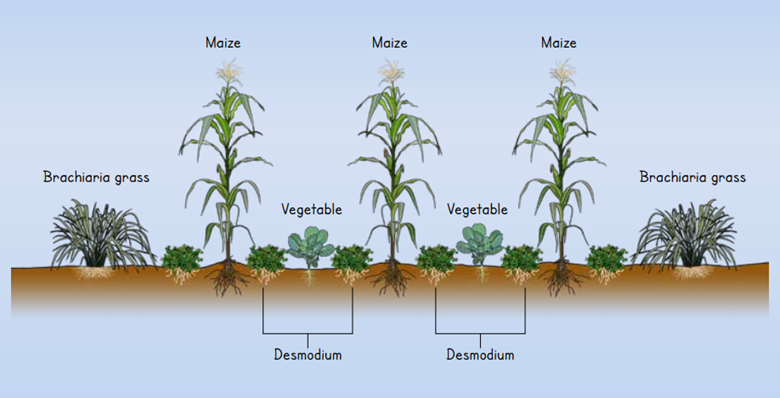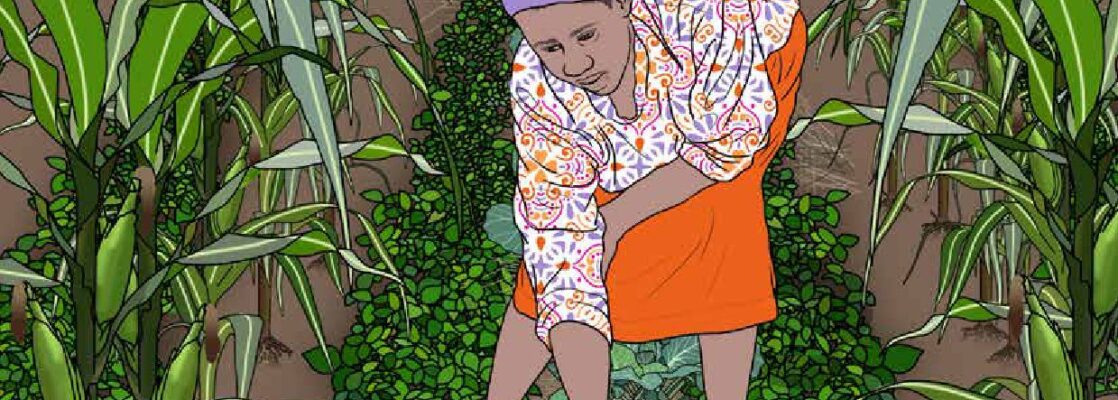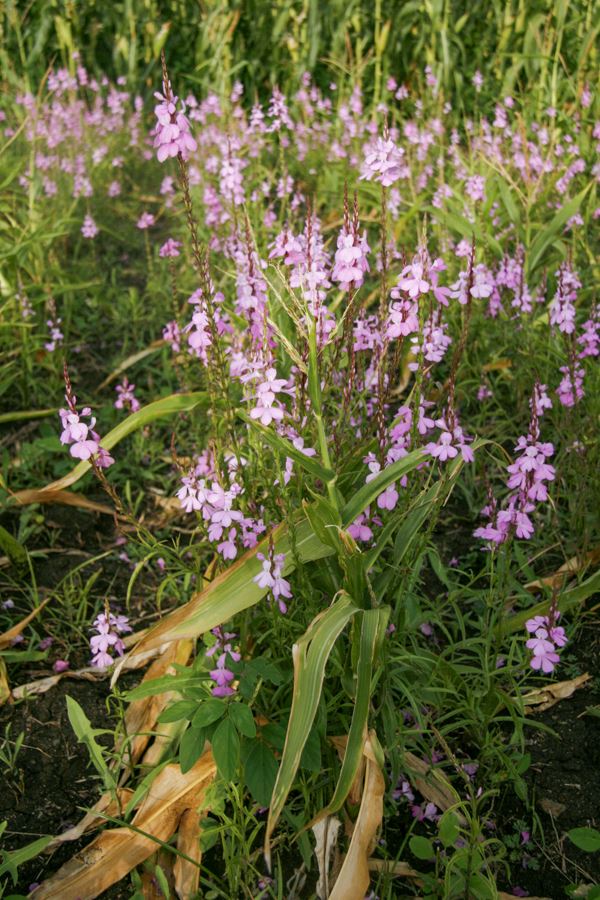Food demand in the world is increasing and by 2050, the global population will reach nearly 10 billion people which will cause food demand to increase by 56%, according to Global Citizen. Along with this, food producers are facing major challenges in the domain of food safety and the usage of agrochemicals on their farms. One of the solutions for future food production is agricultural intensification beside the green revolution – with reduced use of chemicals that can damage human health.
In sub-Saharan Africa, the UPSCALE project team presented Push-Pull technology (PPT) in combined farming practice with cereals and vegetables. Since farmers had problems with pests such as diamondback larvae, stemborers, fall armyworms and very common cabbage looper and tomato leaf miners, this technology made clear changes to their production and lifestyle.
The Push-Pull first served as technology for maize, sorghum and millet, but as time passed, scientists from ICIPE improved the Climate-Smart Push-Pull and included vegetables to form a Vegetable Integrated Push-Pull technology (VIPPT).
How does Push–Pull System Intensification with Vegetables work?
The Push–Pull System Intensification with Vegetables involves planting alternate rows of maize, Desmodium and vegetable crops together with a border trap crop of Brachiaria or Napier grass. A representation is in the graphics below:


This technology uses a wide range of vegetables including cabbages, kale, tomatoes, onions, etc.
Are there any other benefits to the Push–Pull System Intensification with Vegetables?
The Push–Pull System Intensification with Vegetables maintains excellent control of the Striga weed, stemborers and fall armyworms (FAW). Apart from pest management, additional benefits of the VIPPT include improvement of soil fertility, and improved income because the farmer will be harvesting the vegetables for sale and domestic use, while still waiting for the maize crop to mature.
In comparison to the agricultural technologies, with VIPPT during the off-season, farmers can plant vegetables between the Desmodium. This ensures maximum utilisation of the land and reduces soil erosion enriching soil by fixing nitrogen and improving carbon. Additionally, it ensures moisture use efficiency and conservation. Desmodium and Brachiaria provide year-round fodder for cows and goats.
Another benefit that stands out is that VIPPT does not require chemical use. Without using chemicals, farmers ensure a healthy population of pollinators such as bees and natural enemies of pests.
Farmers quote:
“As our able agricultural extension officer has taught us we can farm organically without using harmful pesticides. This ensures that we eat fresh healthy food and so we spend less time in hospitals and more time being productive.”
By celebrating World Soil Day, FAO recognized water as an integral part of soil and the synergy between organic farming without hazardous chemicals. In that way, Vegetable Integrated Push–Pull Technology ensures that water sources are not contaminated with agrochemicals.
Farmers quote:
“With the Push–Pull System Intensification with Vegetables, I have a ready supply of Desmodium and Brachiaria as feed for my two cows. They produce enough milk for our home consumption and we sell the surplus milk.”
Attainable safety for children, farm and future
Since the UPSCALE project started, farmers who were using firstly PPT and then VIPPT, noticed that their children no longer suffer from conditions triggered by agrochemicals and their performance in school is greatly improved since they no longer miss classes due to hospital visits.
This is a small step for sub-Saharan African farms and families but it will have a major influence in the future time.
The last, but not the least benefit of VIPPT is that the farmers have stopped buying vegetables altogether and they have improved their quality of products so they can enter the food market and sell in between the cropping seasons.


